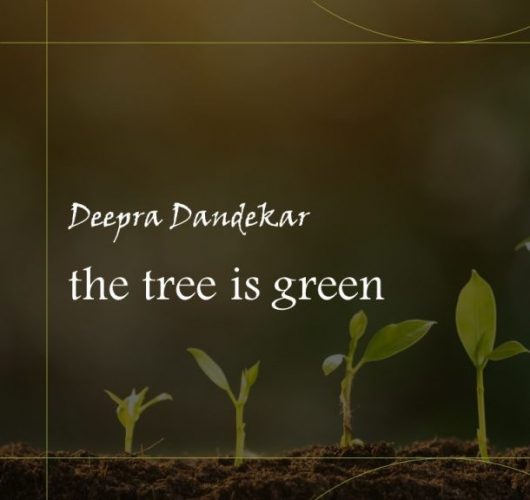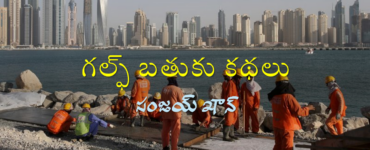Alandi is a beautiful pilgrimage town on the outskirts of Pune. But like almost every pilgrimage town in India, Alandi is also crowded and unclean despite municipality and individual efforts. Alandi is on the banks of River Indrayani, and again, as is expected, the Indrayani is polluted by the sewage water it receives from many towns en-route. Alandi is a favorite haunt for many devotees of the Varkari tradition, who walk from Alandi to Pandharpur every year on a pilgrimage known as Vari – a word that means an often-repeated act. Also called Palkhi or palanquin, the Vari has pilgrims or Varkaris carry the sandals of Sant Dyaneshwar, a prominent saint of 13th century Maharashtra to Pandharpur, to the temple of Vithoba. Sant Dyaneshwar was the greatest bhakta of Vithoba and the Vari annually reconstitutes that moment of his bhakti when Varkaris join him in his Vari to Pandharpur, and absorb Sant Dnyaneshwar’s own bhakti for Vithoba in the process.
The Palkhi reaches Pandharpur on Ashadi Ekadashi or the 11th lunar day of the bright half of the Ashadh month (July-August), when Lord Vishnu is said to commence his sleep for the next four months – a period known as Chaturmasa or the four months of religious observance and abstinence. The day when Lord Vishnu awakens, Prabodhini Ekadashi or the 11th lunar day of the bright half of the Kartik month (October-November), is also an occasion of celebration at Alandi, since this occasion is close to the anniversary his own Samadhi, sometimes referred to as Sanjeevani, or live entombment at Alandi. Pilgrims venerate the tree under which he accepted Samadhi, believing that the saint is still alive and has only physically retreated from the world.
Pune is flooded by Varkaris during the Ashad month as they accompany the Palkhi to Pandharpur. Most Varkaris are fed by householders in Pune, who for personal reasons, may have found it impossible to go on Vari themselves. Householders feed Varkarais with the wish that their own vicarious presence at Alandi and Pandharpur can be henceforth ascertained through the body of the pilgrim’s presence, through their food. The Vari is hence, a liminal, and absorbing, journeying phase that unites the Varkari and the householder with Vithoba and the bhakti of Sant Dnyaneshwar.
Alandi is famous for yet another reason. Many runaway couples carry out clandestine weddings at Alandi. I have myself, ritually ‘given away the bride’ on many such occasions, assisting friends who were eloping. In the true Vaishna tradition of embodying the cosmic and eternal love between Lord Vishnu and goddess Lakshmi, or the love between the lord and his bhakta, Alandi embodies Sant Dyaneshwar’s divine love for Vithoba. Alandi is also the abode of widows, who as bhaktas absorb Sant Dnyaneshwar’s own bhakti by considering Vithoba as their husband.
I remember one incident in particular. It must have been the year 2001, when a friend in what was a group of colleagues, a proficient Sitar player, expressed a special birthday wish. He wanted to play a morning Raga composition for Sant Dnyaneshwar at Alandi. The Raga was to be played at the crack of dawn, directly after the Kakad aarti. The Kakad aarti takes place just before dawn when it is still dark, and is conducted to wish the deity a good morning. And this was on an early January morning, with Pune at its coldest! Our friend had practiced his composition, eliciting help from another close friend who was an equally proficient Tabla player. I had decided to accompany them to Alandi despite the cold. One of the workers in our office (known in government departments as a peon) had family in Alandi. Not only was he a Varkari himself, he was a well-known, and enthusiastic Kirtan singer at a nearby temple. Hearing our plans, he joyfully invited us to his home, where I would be given a bed along with the other ladies and children of the household.
We reached Alandi on the earlier night of the birthday in a small truck hired specially to transport the Sitar and Tabla. It was late at night since we had left Pune after office hours, and Alandi, even if one drives on a motorbike and manages to avoid Pune traffic, can still take a couple of hours. A truck takes even longer. We were exhausted when we reached, and I retired immediately. It was an uncomfortable night though, and I slept in fits and starts in my anticipation of morning. At last, I heard the bells of the Kakad aarti and jumped out of bed. Almost springing out of the house after a hasty bath, I headed straight to the temple.
It was still dark and my friends, complete with Sitar and Tabla bags, were already waiting inside the compound. There was growing anticipation in the air about our musical soiree with the saint, as bhaktas began looking curiously and appreciatively at our musical instruments, smiling and lingering on to listen. The temple itself, built in high Peshwa architectural style, is breathtakingly beautiful. In the growing light of the dawn, the inner courtyard around the sanctum has an ethereal and a fragile quality, that even if very briefly, gives one the feeling of being in an eternal space – a spatial chemistry that exists from a time before the temple. That moment was there, however briefly, for me too. That courtyard, with the tree and shrine felt as though it contained a space of freedom within it – freedom to meet Sant Dnyaneshwar as an old, and dear friend. This feeling of intimate freedom was older than the temple itself – the bhakta peripheral to his own, much older to himself, bhakti. But I could already hear the Sitar and the Tabla. After a few false starts, my friends too, soon became immersed in their own music – their own bhakti. It was beautiful, somber and an introspective grey dawn shot through with early morning sunlight.
I wandered to the river, a short distance from the temple. The cobbled path goes downward from the temple, and can be slippery – often muddy at that time of morning, with people returning to town after bathing in the river. The river lay shrouded in morning mist, looking like a chasm, despite the first rays of morning light. I wondered what Sant Dnyaneshwar must have felt, exactly on one such winter morning in the months after Kartik, when the Indrayani was covered in mist, when he accepted Samadhi under a tree. Returning to the temple, where my friends were packing up, we headed to the nearby tea shop for special, silky tea, drunk piping hot on platefuls of fiercely spicy vada-sample dripping in oil, and covered with chilies, coriander, and sev – my most favorite! Heading back, sensorially filled with wonder and full of thoughts about Sant Dnyaneshwar, our hearts felt heavy after such a transformative experience.
I remembered the experience of that poignant morning at Alandi: the intimacy of that inner courtyard with the tree, the music, the misty river, and the taste of vada-sample and hot tea, when I saw Facebook friends from Pune and Mumbai recounting the terrible cold in Maharashtra this year.
*









Add comment